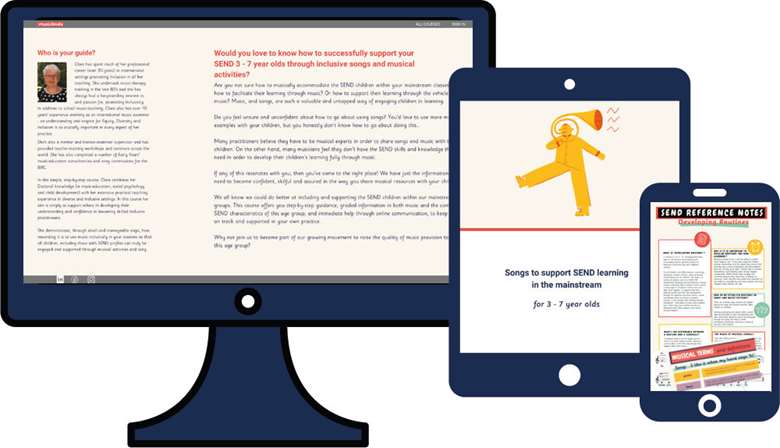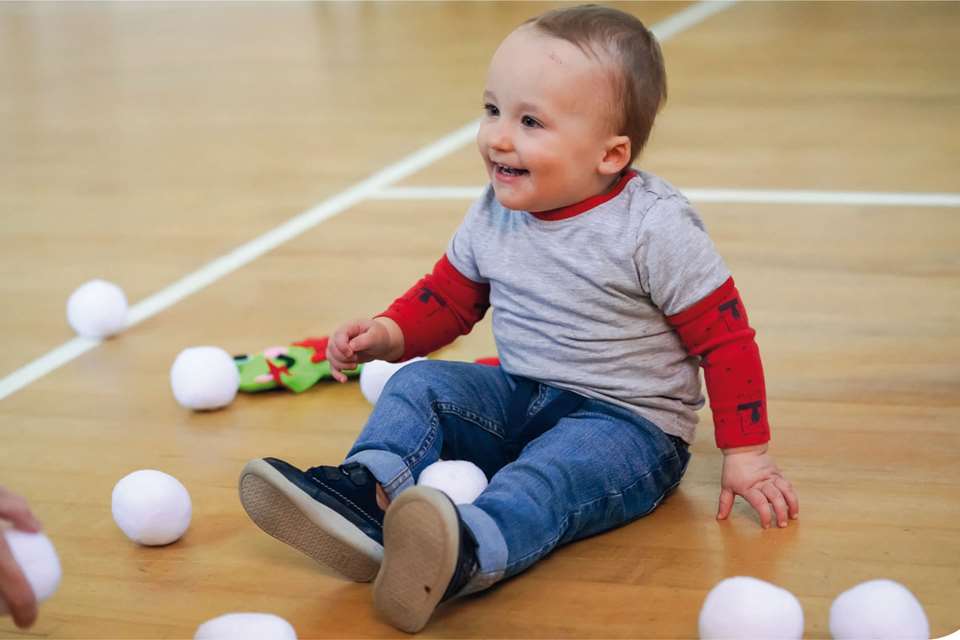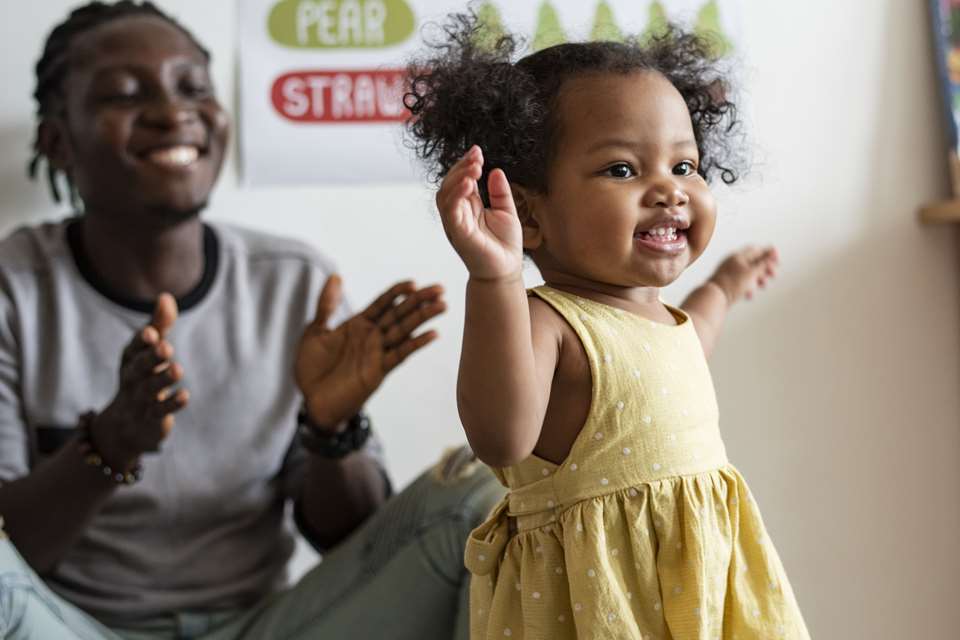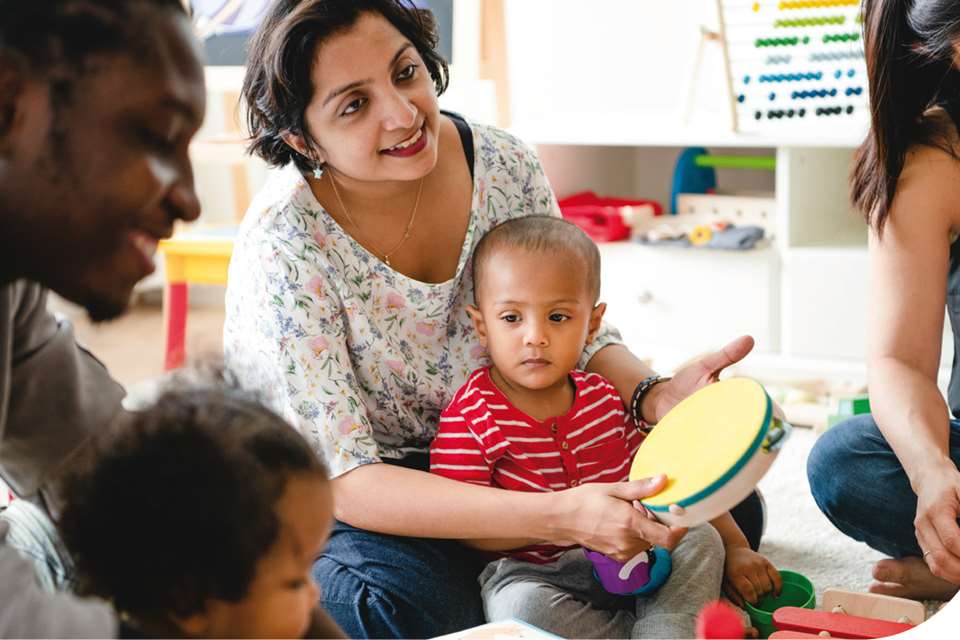Reviews: 12 Sensory Songs for the Early Years - Supporting SEND teaching
Emma Hutchinson
Sunday, August 1, 2021
Clare Seymour is busy turning Musicbuds’ existing content into an online platform and course to support SEND teaching of ages 3–7 in mainstream settings. As a specialist in early childhood and SEND music teaching, Music House for Children's founder Emma Hutchinson explores this work-in-progress and considers its potential within the SEND landscape.

There is no doubt about the amount of heart and soul that has gone into creating these music resources, with particular reference to the compositions. The resources I am reviewing were designed back in 2018 to support educators, musicians, and people working with SEND (special educational needs and disability) children from nursery up to Key Stage 1. I was also asked to provide a brief overview of the upcoming online training course to show how these resources can be accessed by a wider audience. The content of this book is soon to be revitalised as an online platform, so I will skim over any hardcopy-specific critique.
Overall layout
This cheerfully coloured Canadian ring-bound is complete with illustrative figures playing instruments on the front page. Once in, the helpful large blue print clarifies what the book is all about and who it is for. I know too that its ultimate objective is to instil joyous, playful music making in children and SEND specialists alike.
For the curious buyer, however, the syntax could be a little clearer, particularly when referencing ‘specialists’ and details on the integrity of the delightful songs. Indeed, they may be brimming with musical and pedagogical integrity – more on this please – and lend themselves to being developed organically, but on this first page I want to think, ‘Wow! This is what I need because it is for me, for my children, and for my learning’. There are grammatical errors here and there, although this does not detract from the quality of the songs and recordings.
Moving onto the songs themselves, each has directions on what to do with it, together with a brief description of the SEND focus in blue. With no information on the red and blue numbered circles, I assume these correspond to the CD tracks with the accompanied vocals shown in red and the accompaniment in blue – I imagine that once transferred online, these details will be easily clarified.
The directions on how to use each song abbreviates unnecessary wording to afford quick and easy understanding of what to do and how to organise the children. However, perhaps more detailed directions might be foolproof, with full sentences and clarity on who, what, when and how.
SEND focus and music
The SEND focus on each song is very short, which differs from the more detailed information presented in the digital version that includes the EYFS and music guidelines. As a SEND focused music teaching book, more detailed analysis is needed for me to see how music could nurture responses and positive outcomes in children with disabilities. What specific children are we reaching? How disabled are these children? Does the SEND focus really correspond to all children? Many of the songs refer to physically abled children. If we look at I'm a tree swaying as an example, I would struggle to see how profoundly disabled children would respond with ‘The ability to move an arm while keeping the remainder of the body still’. Perhaps the description could refer to ‘blink an eye’, ‘twitch fingers’, or ‘turn head’.
While Musicbuds is generally targeted at SEND in mainstream settings, a more detailed description of the sort of needs that we might be looking to support with these admirable songs would help SEND specialists gauge what they are aiming for. It would be easy for an educator to dismiss the written focus if the possibilities for all participants are not spelt out. Additionally, the song On the count of 3 suggests processing of sensory stimulation is the SEND focus. Suggesting solo playing in the directions for this would perhaps be wise for children struggling with Sensory Processing Disorder (SPD).
Overall, the directions and SEND focus sections could go deeper to show how music captures and provides meaning and positive outcomes for these children. While we know that SEND encapsulates vast and, in many cases, still untapped territories, my view is that niche and deep targeting will provide musical relevance and meaning for all. Perhaps the upcoming online platform provides a perfect opportunity for exploring these nuanced and complex elements further.
In terms of the music itself, the manuscript is well harmonised and the stuff of experienced musicians. This resource would be an asset to an accompanying musician, or a music educator trained as a SEND leader. The music is generally clear and well laid out.
Online course-to-be
In a snapshot of what is to come via a cluster of short videos, Clare is a compelling presence in this new platform for Musicbuds’ resources. There is still work to be done in this arena before we get to the nuts and bolts of what educators from all specialisms are desperate to learn: how to facilitate songs and musical activities for all our children. With so little high-quality SEND focused material out there to support children in musical activities, there is much opportunity going forward to adapt, compose, transcribe, and describe with specific SEND indicators in mind.
Overall, the Musicbuds resources are sound, and I am glad to see that the books and CDs are soon to be replaced by a more widely accessible online platform. Visit Musicbuds’ website for more great songs, which hold fast with great melodies, a couple of varied genres, catchy rhythms and pleasing harmonies – I am still humming the pizza song.




